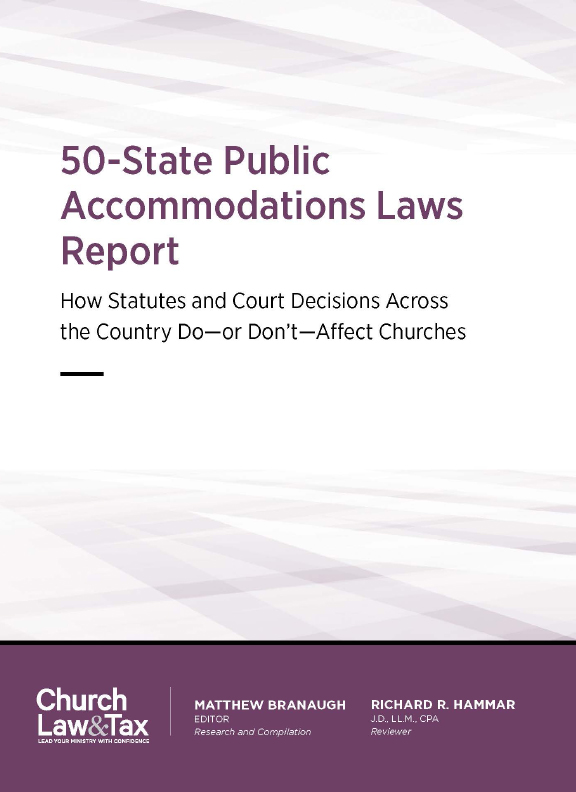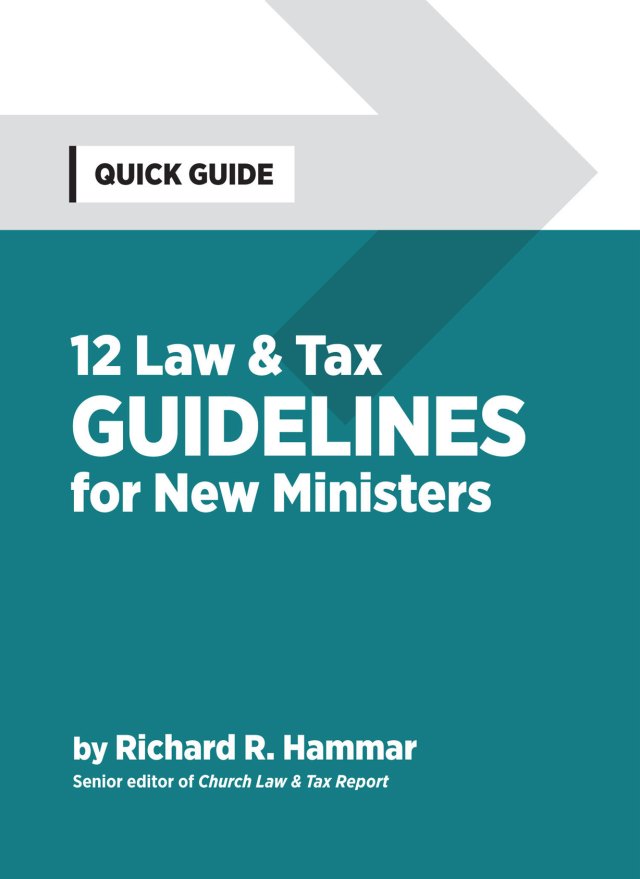Key point 6-02.02. Churches are subject to the provisions of their governing documents, which generally include a charter and a constitution or bylaws (in some cases both). A charter is the state-approved articles of incorporation of an incorporated church. Most rules of internal church administration are contained in a constitution or bylaws. Specific and temporary matters often are addressed in resolutions. If a conflict develops among these documents, the order of priority generally is as follows—charter, constitution, bylaws, and resolutions.
A Maryland appeals court ruled that a church’s board of trustees had the legal authority to terminate a pastor even though this authority was not specifically mentioned in the church’s governing documents.
Background
In the summer of 2016, a man met with a pastor regarding his desire to start a church. During their discussions, it was agreed that the pastor’s son-in-law would serve as pastor of the new church. At a meeting in October 2016, the pastor and three additional parties signed articles of incorporation, which were submitted to the Maryland Department of Assessments and Taxation. The department accepted the new church’s articles of incorporation, thereby initiating its existence as a nonprofit corporation.
The first section of the church’s articles of incorporation provided that five named persons had been “elected by the members of the congregation . . . to act as trustees in the name and on behalf of said congregation. . . .”
The third section of the articles of incorporation defined the corporation’s purposes as follows:
The Corporation is organized as a church exclusively for religious, charitable, and educational purposes within the meaning of Section 501(c)(3) of the Internal Revenue Code of 1986 (or the corresponding provision of any future United States Revenue Law), including for such purposes, but not limited to, promoting the cause of Christ; advancing the kingdom of God; winning the unsaved; reaching the unchurched; encouraging the development of all members and others in Christian living; and engaging in any other activity that is in the furtherance of section 501(c)(3) tax-exempt purposes.
On November 27, 2016, the church held an “ordination and sending” service for its new pastor. On that same day, church members unanimously voted to install the church’s official constitution, which “made no mention of appointing or dismissing clergy but did provide that the officers of the church had the authority to conduct all of the business affairs of the church” (quoting a state appeals court).
The church board voted to remove the pastor
In late 2018 and early 2019, church trustees began discussing removal of the pastor due to his conduct, including:
- “bringing a gun into the church and leaving it unattended and accessible to children”;
- “resisting the creation of a school and summer camp”;
- “a lack of organizational skills”; and
- “attempting to organize a ‘bow shoot’ at [the church] despite being informed that [the church] was not insured for such activity.”
On March 3, 2019, the church’s board met and voted on the removal of the pastor:
[T]he Board of Trustees convened, with all seven elected board members and the pastor, a trustee by virtue of his position as pastor in attendance. Five elected board members voted to remove the pastor, and two trustees and the pastor voted in opposition. Following the meeting, the pastor was issued a letter instructing him to remain away from [the church] and to vacate the [parsonage] on or before April 5, 2019.
The church asked a local court to issue a non-adversarial “declaratory judgment” addressing the legal authority of the trustees to oust the pastor.
The pastor claimed that the church “trustees had no authority to remove him as pastor” since the state nonprofit corporation law contained “no language expressly authorizing the trustees to ‘control any operation of the church‘ aside from the church’s assets.”
The pastor also argued that the decision to remove him involved “ecclesiastical matters” that should have been left to the church to decide.
The church trustees claimed that the language of the state nonprofit corporation law was “not exhaustive and that the trustees acted within the scope of their corporate authority.”
The trustees had “the authority to terminate”
The trial court concluded that “the question of who possesses the authority under the relevant governing documents to authorize the removal [of a pastor], and the validity of those documents, is a non-ecclesiastical matter that the Court can resolve without trespass to the First Amendment.”
The court found that the church trustees acted within the scope of their corporate and statutory authority when they voted to end the pastor’s tenure. The pastor appealed.
A state appeals court agreed with the trial court’s ruling:
Churches in Maryland formally organize as religious corporations and thus, the trustees, not the congregation, constitute the corporation. . . . “[T]he purpose of [religious] incorporations . . . [is] to enable the church to attend more readily and efficiently to their temporal affairs, without any power or authority to interfere with forms of worship, articles of faith, or any other matter, relating strictly to spiritual concerns.” . . . [The Maryland Religious Corporations Law] states: “[u]nless otherwise provided by law or its charter, a Maryland corporation has the general powers, whether or not they are set forth in its charter,” to perform “every other act not inconsistent with law which is appropriate to promote and attain the purposes set forth in its charter.” Thus, a corporation’s board of directors [including a religious corporation’s board] has the power to manage “[a]ll business and affairs of a corporation. . . .”
Here, while the church’s incorporation documents did not expressly provide for the appointment or removal of a pastor, the trustees were clearly the “body corporate” and there were no documents conferring any authority to the congregation.
The court also found that the church never adopted a new or different constitution, and therefore, “the authority to terminate [the pastor] was vested in the governing body, i.e., the trustees. . . . As such, the trustees properly acted in accordance with their corporate authority.”
In responding to the pastor’s argument that the trustees lacked authority to terminate him because the firing of a pastor is an ecclesiastical matter reserved to the church, not the trustees, the court noted: “[H]ere, there was simply no evidence that the Board’s decision was based on disputes regarding religious doctrine, biblical interpretations or other ecclesiastical matters.”
Rather, the court added, the pastor’s “‘personal behaviors, organizational shortcomings, inability to manage . . . drove’ the decision.”
The court concluded: “In sum, the [church’s] Board of Trustees, in accordance with its Articles of Incorporation and applicable statutes, had the authority to terminate [the] pastor.”
What this means for churches
There are three points to note about this case.
First, the court concluded that the civil courts do not necessarily have to refrain from resolving all internal church disputes. The resolution of such disputes is barred by the First Amendment only in disputes regarding “religious doctrine, biblical interpretations or other ecclesiastical matters.”
Second, the court applied state nonprofit corporation law in determining the procedure for removing the church’s pastor since the church had not addressed this issue in its governing documents.
This illustrates the basic principle that state nonprofit corporation law is a “gap filler.” An incorporated church is generally free to address issues of administration and governance in its articles and bylaws in any manner it chooses, free from state interference. But, if a church neglects to address an issue in its governing documents, then state nonprofit corporation law will provide the answer.
Third, the case illustrates the legal effect of incorporation. Does it make a church subordinate to state corporate law? No. The court explained:
Churches in Maryland formally organize as religious corporations and thus, the trustees, not the congregation, constitute the corporation. . . . “[T]he purpose of [religious] incorporations . . . [is] to enable the church to attend more readily and efficiently to their temporal affairs, without any power or authority to interfere with forms of worship, articles of faith, or any other matter, relating strictly to spiritual concerns.”
Once again, churches can revise their governing documents to provide for any contingency, including the removal of a pastor. Vaughn v. Faith Bible Church, 241 A.3d 1028 (Md. App. 2020).




